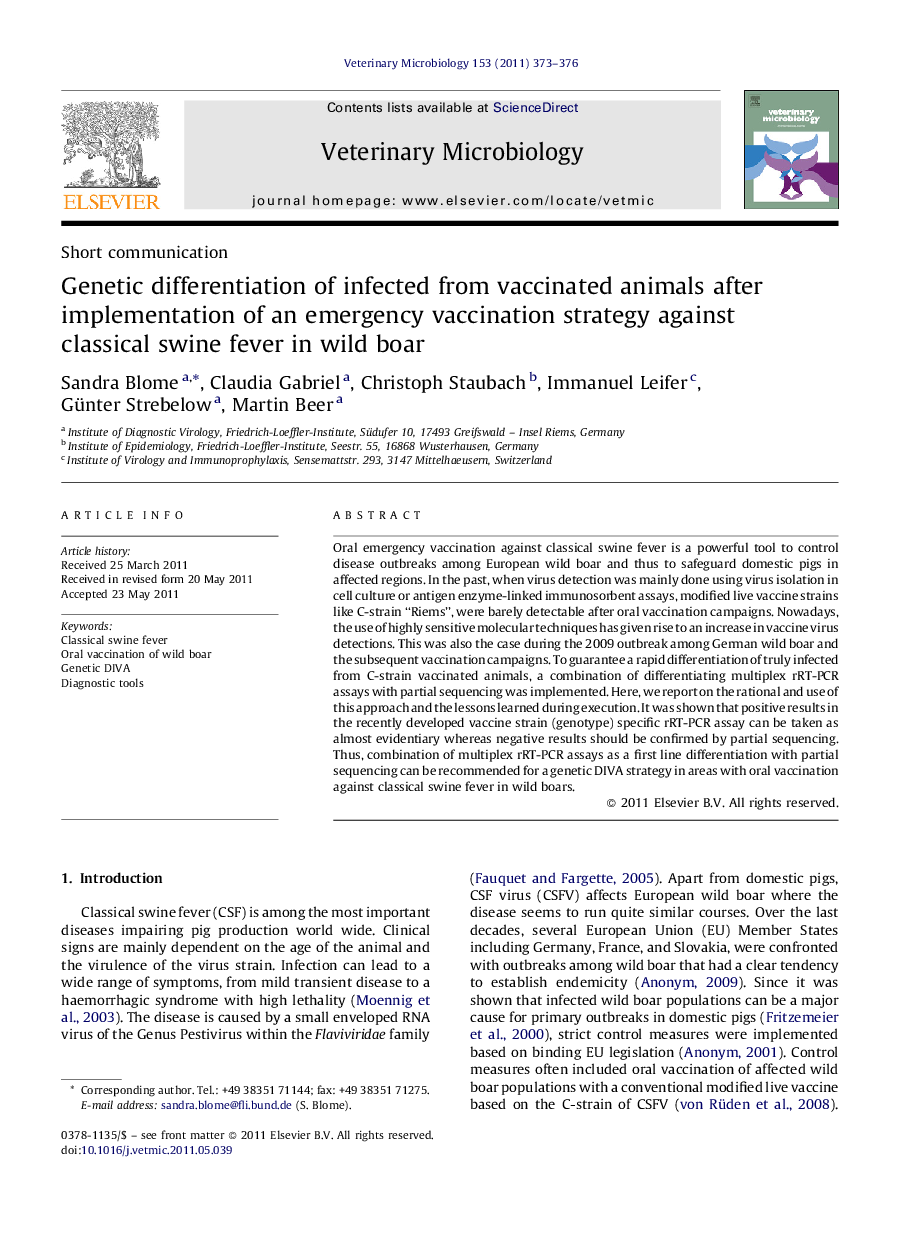| کد مقاله | کد نشریه | سال انتشار | مقاله انگلیسی | نسخه تمام متن |
|---|---|---|---|---|
| 8505831 | 1555394 | 2011 | 4 صفحه PDF | دانلود رایگان |
عنوان انگلیسی مقاله ISI
Genetic differentiation of infected from vaccinated animals after implementation of an emergency vaccination strategy against classical swine fever in wild boar
دانلود مقاله + سفارش ترجمه
دانلود مقاله ISI انگلیسی
رایگان برای ایرانیان
موضوعات مرتبط
علوم زیستی و بیوفناوری
علوم کشاورزی و بیولوژیک
علوم دامی و جانورشناسی
پیش نمایش صفحه اول مقاله

چکیده انگلیسی
Oral emergency vaccination against classical swine fever is a powerful tool to control disease outbreaks among European wild boar and thus to safeguard domestic pigs in affected regions. In the past, when virus detection was mainly done using virus isolation in cell culture or antigen enzyme-linked immunosorbent assays, modified live vaccine strains like C-strain “Riems”, were barely detectable after oral vaccination campaigns. Nowadays, the use of highly sensitive molecular techniques has given rise to an increase in vaccine virus detections. This was also the case during the 2009 outbreak among German wild boar and the subsequent vaccination campaigns. To guarantee a rapid differentiation of truly infected from C-strain vaccinated animals, a combination of differentiating multiplex rRT-PCR assays with partial sequencing was implemented. Here, we report on the rational and use of this approach and the lessons learned during execution. It was shown that positive results in the recently developed vaccine strain (genotype) specific rRT-PCR assay can be taken as almost evidentiary whereas negative results should be confirmed by partial sequencing. Thus, combination of multiplex rRT-PCR assays as a first line differentiation with partial sequencing can be recommended for a genetic DIVA strategy in areas with oral vaccination against classical swine fever in wild boars.
ناشر
Database: Elsevier - ScienceDirect (ساینس دایرکت)
Journal: Veterinary Microbiology - Volume 153, Issues 3â4, 15 December 2011, Pages 373-376
Journal: Veterinary Microbiology - Volume 153, Issues 3â4, 15 December 2011, Pages 373-376
نویسندگان
Sandra Blome, Claudia Gabriel, Christoph Staubach, Immanuel Leifer, Günter Strebelow, Martin Beer,